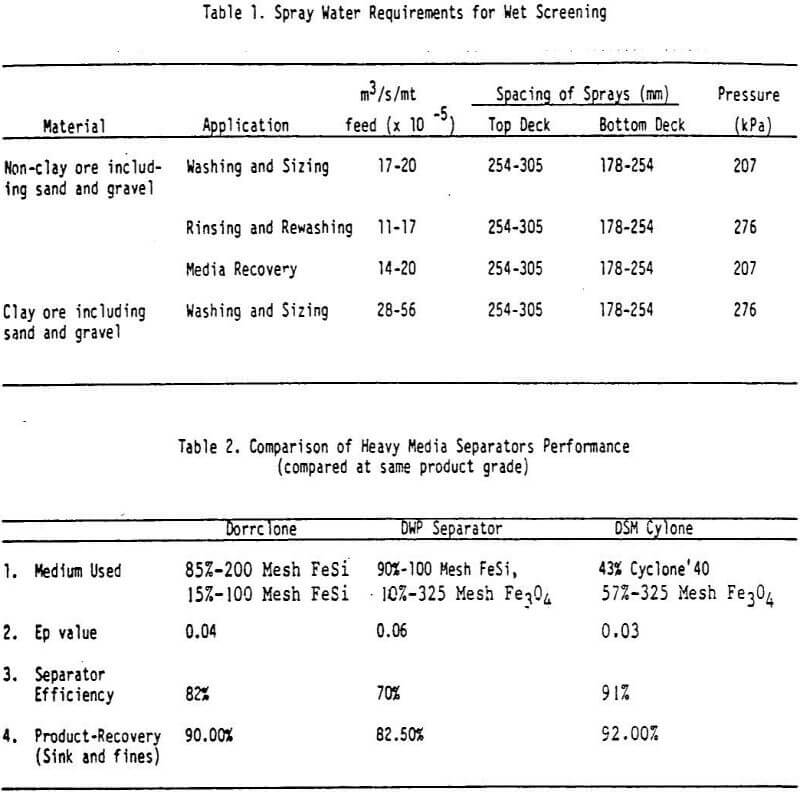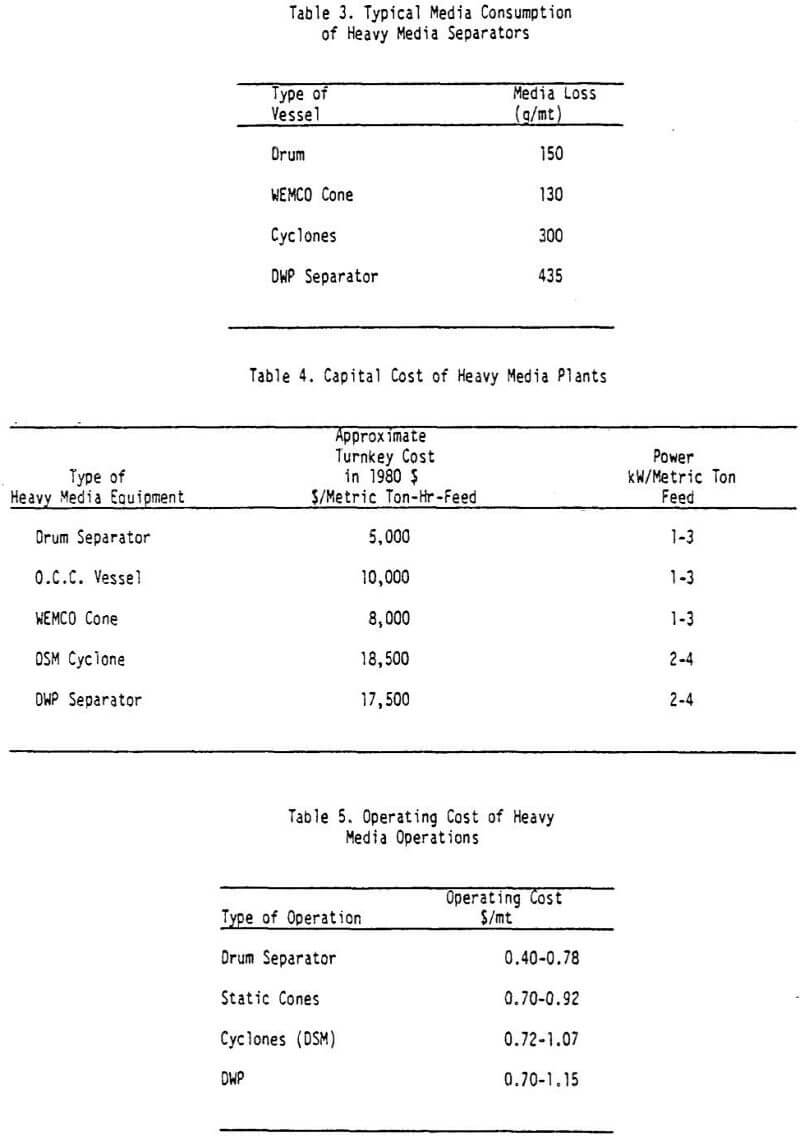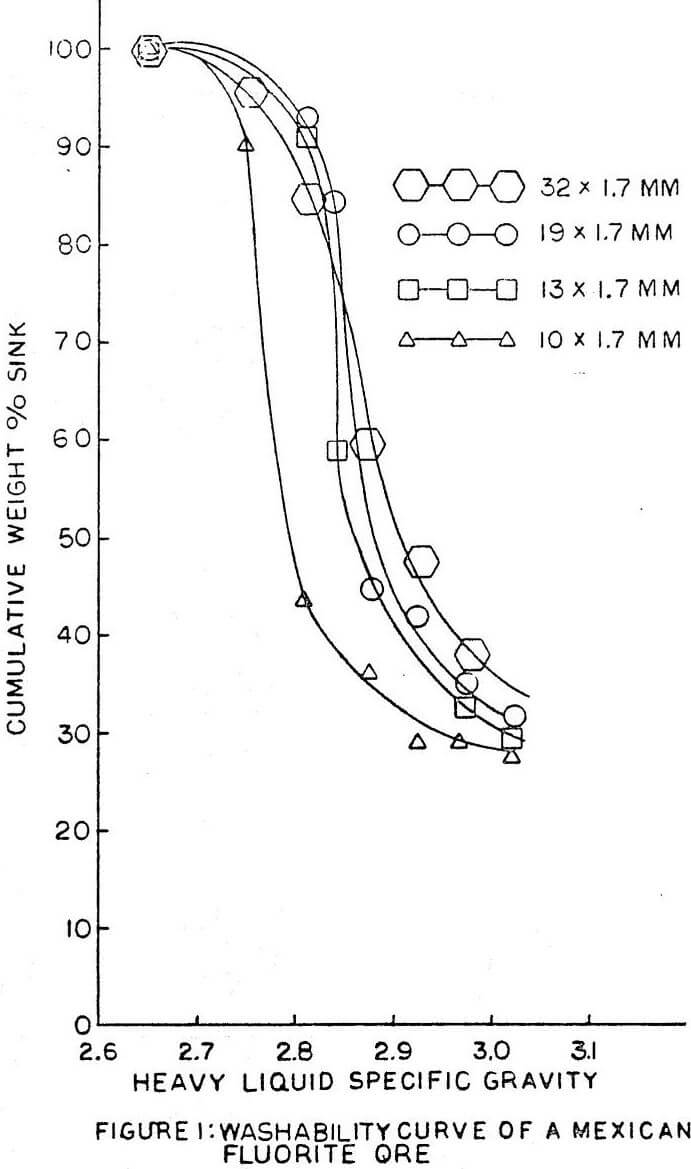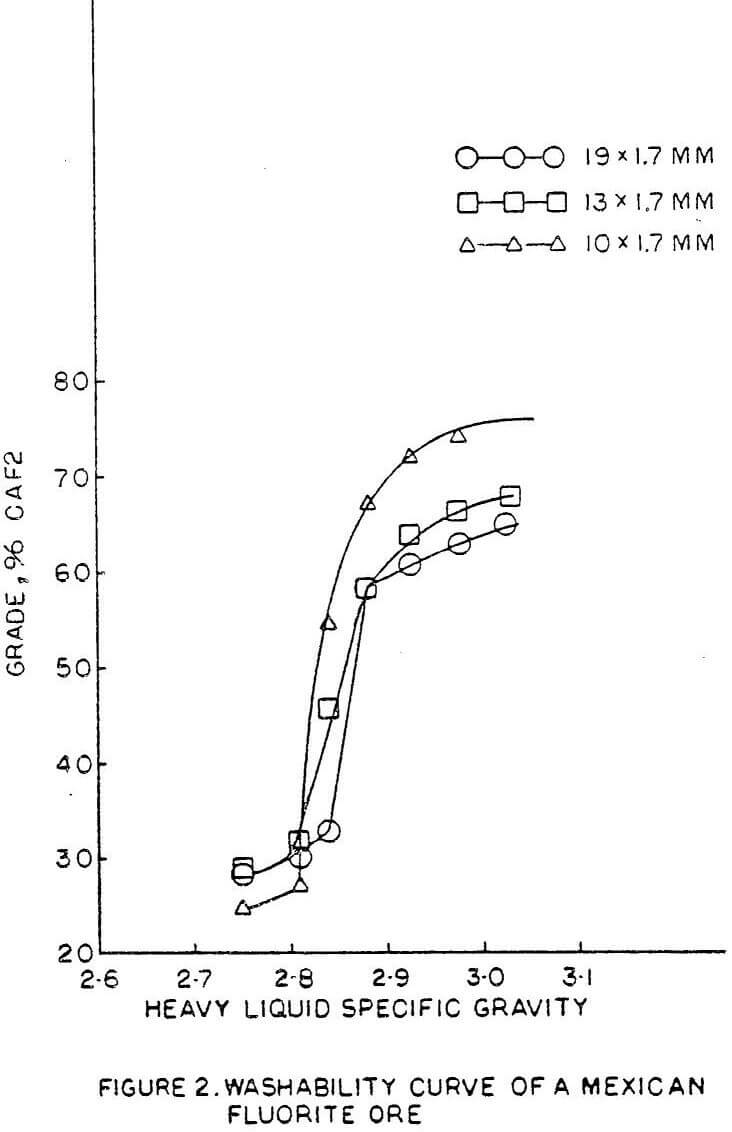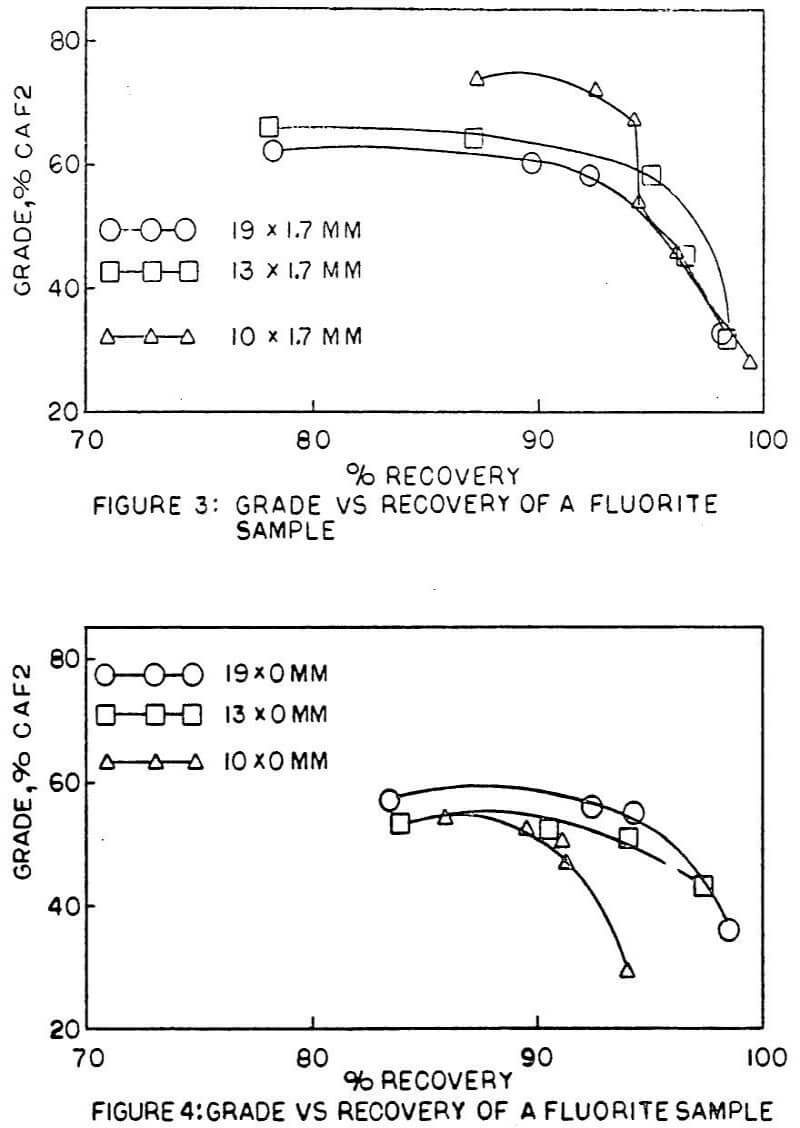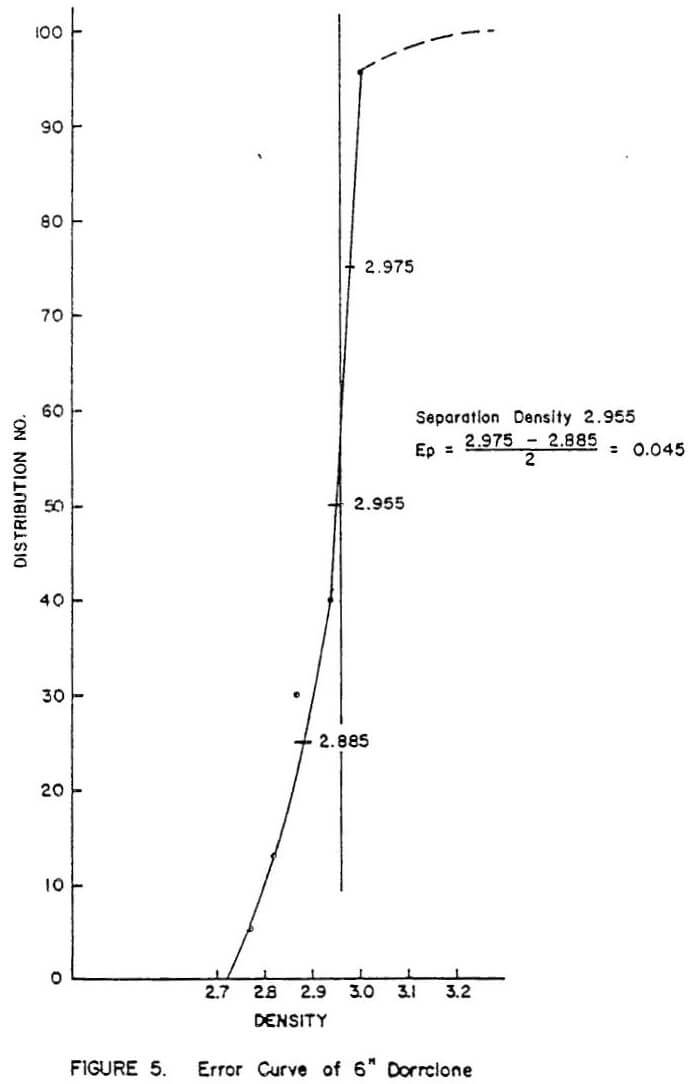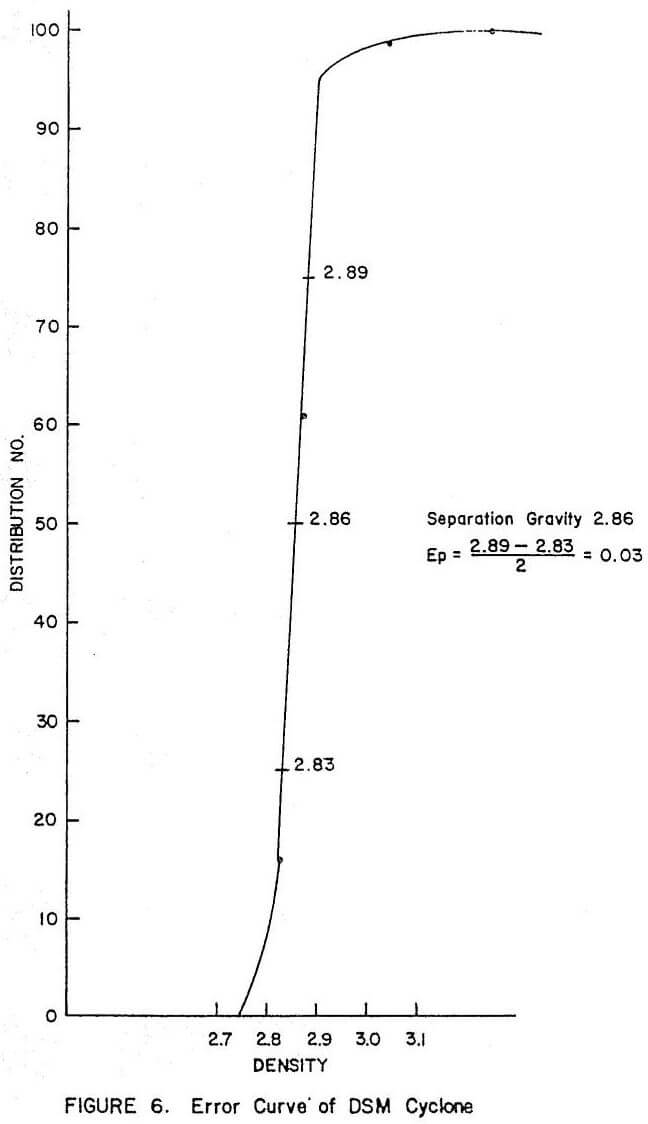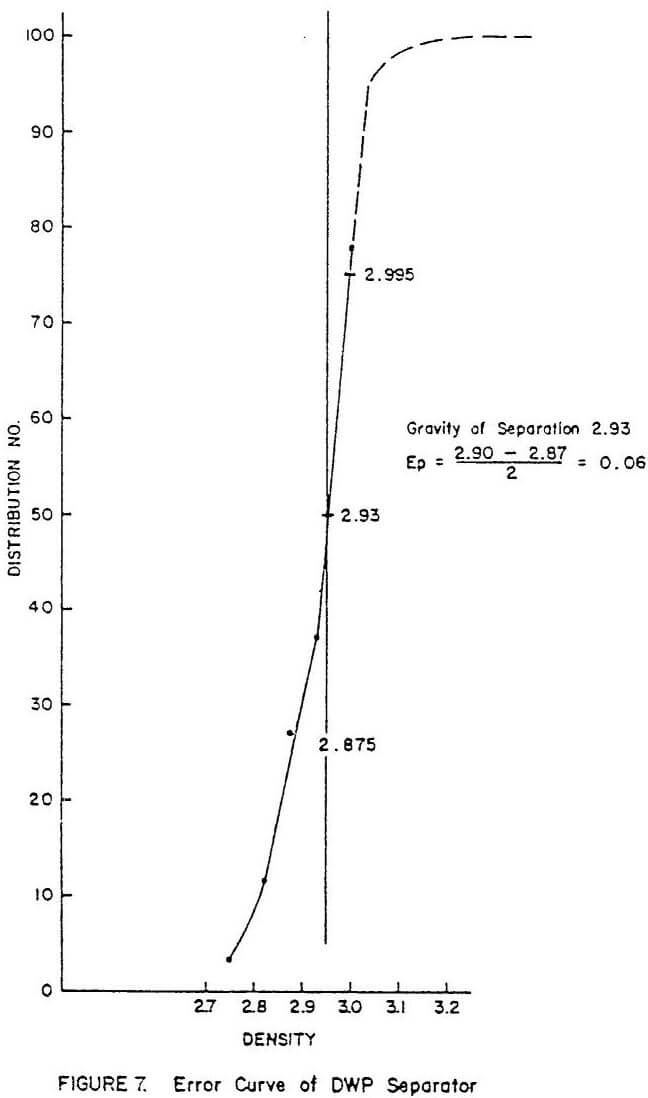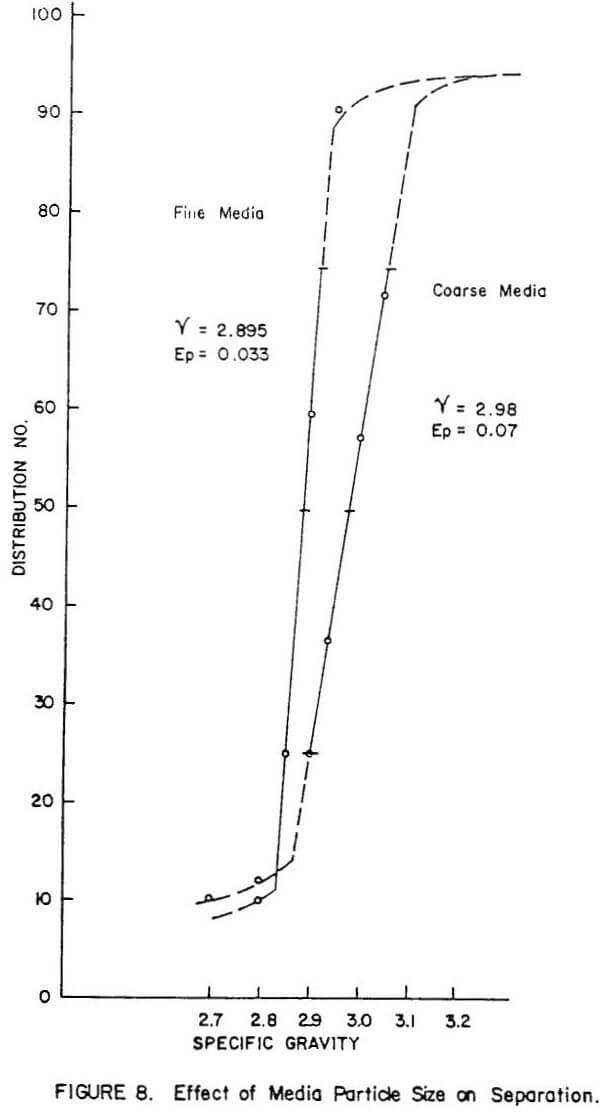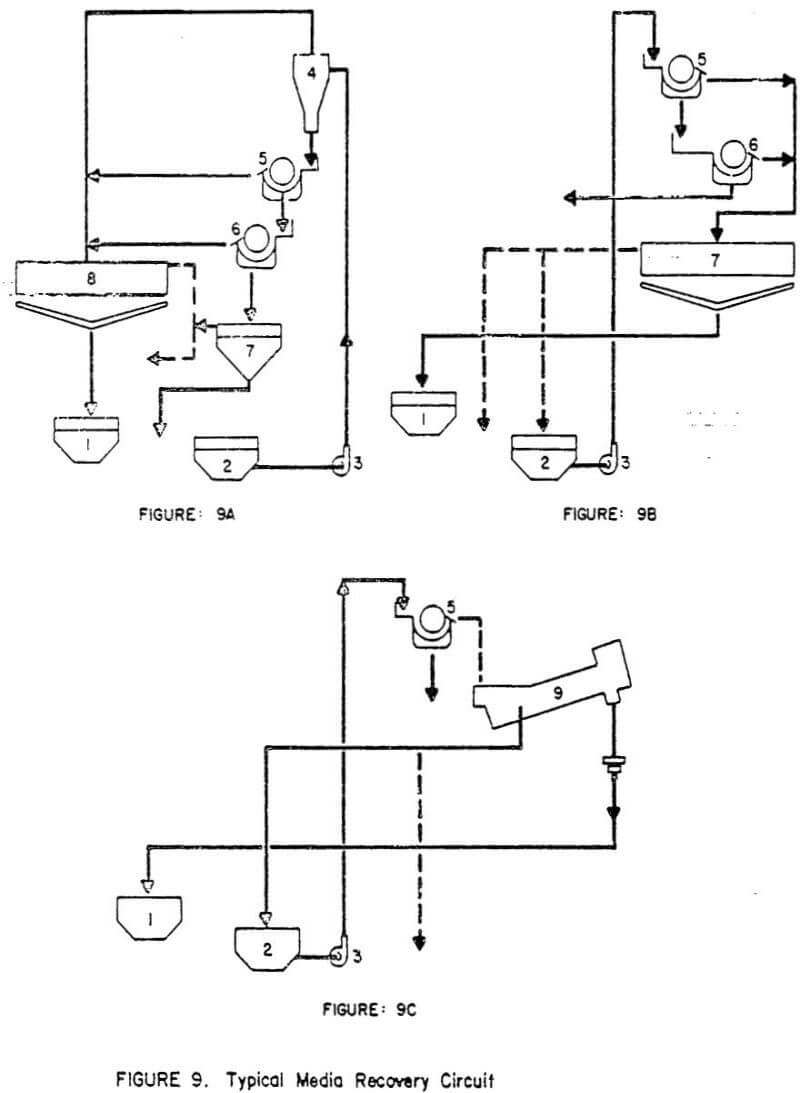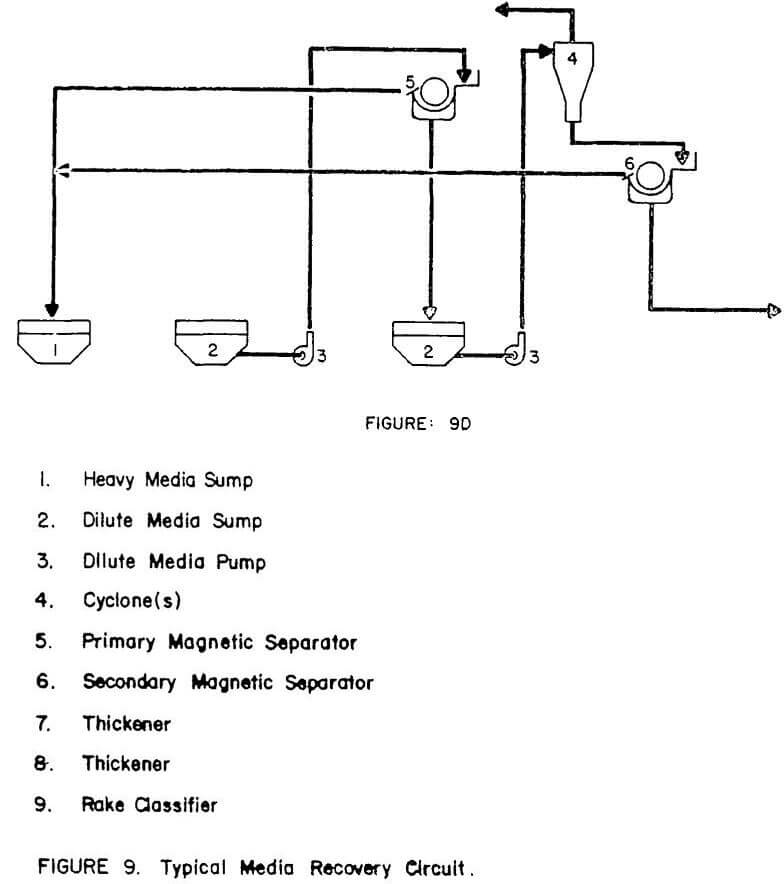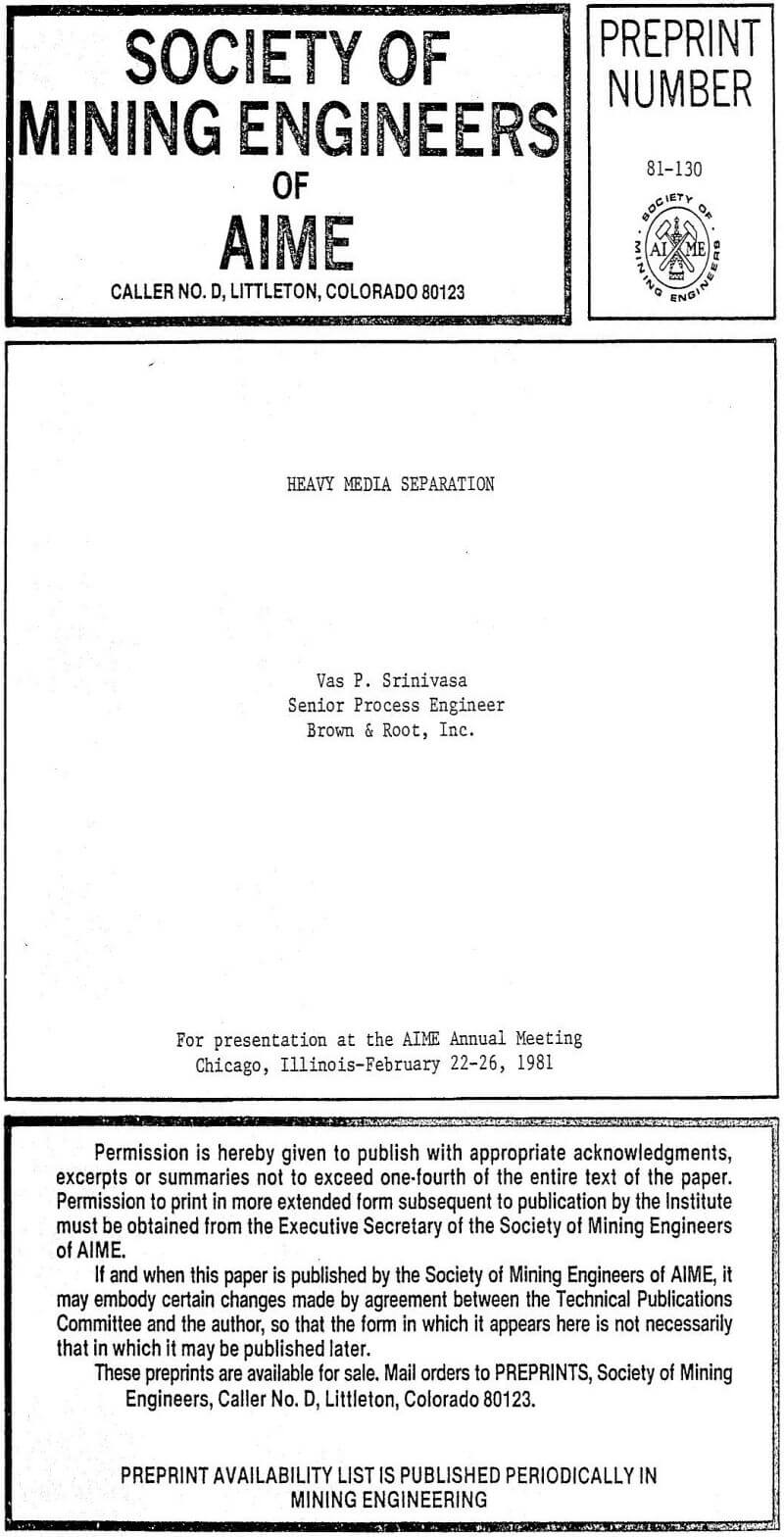Table of Contents
Media
Magnetite (Fe3O4) and Ferrosilicon (FeSi) are the most widely used media. Magnetite is used up to a specific gravity of 2.2; a mixture of FeSi and Fe3O4 is used for the range 2.2 to 2.9; above 2.9 FeSi is used alone. Using FeSi, separations up to specific gravity of 3.4 have been made commercially.
There are two types of FeSi available on the market. The ground FeSi, manufactured in the United States, and the atomized FeSi, manufactured in West Germany. The particle geometry tends towards a sperical shape with atomized FeSi and toward a more angular shape with ground FeSi.
The particle size of the medium is important and varies with the type of equipment used. Quasi-Static vessels like Drum, O.C.C. Vessels, etc., usually tolerate a coarser medium, (-48 or -65 mesh) while static cone separators require medium as fine as -100 mesh. Dynamic separators like DSM cyclones and DWP separators require fine size (-200 to -325 mesh). In general, sharp separation is obtained with finer medium. Figure 8 illustrates the advantage of using fine medium.
Stability of the suspension is very important, otherwise the medium will settle. To provide improved stability, clay or slime are sometimes deliberately added to the suspension. Where slimes are deterimental, water soluble hetro-polysacharides are used.
In spite of higher cost, European operators prefer atomized FeSi beacuse it provides a lower viscosity of suspension which is required for sharp separation as well as high resistance to corrosion and degradation. In addition, the low adhesiveness of the medium to the surface of the minerals makes it easier to wash the media from the sink and float products. The end result is higher yield and lower media consumption.
In practice, using atomized FeSi does not necessarily mean higher media cost. It might be possible to mix a larger proportion of Fe3O4 with atomized FeSi and obtain a suspension equal or better in physical properties to a FeSi suspension. European operators use a mix of as much as 60% Fe3O4 and 40% atomized FeSi and the media loss is very low. The decision as to which media is most suitable for a given operation, among other things, should be based on economics.
Media Recovery
The media is recovered from the sink and float fractions by the drain and wash screens. DSM screens, sometimes referred to in the coal industry as sieve bends, are preferred as drain screens as these are very efficient in removing the fine media. Where blinding is a problem, polyurethane screens are used.
When a single screen has the capacity to handle both the sink and float fractions, a divider is installed along the length of the screen to keep the products separate.
The media recovered from the drain screens is returned to the media sump for recirculation in the media circuit. The medium removed by washing is returned to the dilute media sump as it is too dilute and, in many instances, is contamined with fine impurities. Therefore, prior to return to the media sump for reuse, this should be cleaned and thickened. Wet magnetic separators, with permanent magnets are normally used for cleaning and recovering media.
Single drum magnetic separators are common, however, when the medium is dilute and the feed volume is large, multiple drum separators should be used. For optimum results, the magnetic separators are fed at 30% to 35% solids by weight.
The efficiency of the magnetic separator will depend on the magnetic susceptibility of the media and the rate at which the unit is fed. Satisfactory results are obtained when the separators are fed at the proper feed rate.
Magnetic separators are available in 762 mm, 914 mm, and 1219 mm diameter with magnet widths to 3 m. The installed cost (in 1980 dollars) of a single permanent drum separator per foot of magnet width is 56,580 for 762 mm, $8,000 for a 914 mm and $10,500 for 1219 mm. The cost of a multiple drum separator is usually proportional to the number of drums.
The capacity of 762 mm, 914 mm, and 1219 mm diameter drums are 48, 63 and 85 m³/hr/meter width of drum, respectively.
Media Recovery Circuit Design
The importance of designing an adequate media recovery circuit cannot be overemphasized. Attention should be given to details so that media loss can be kept at a minimum. Keeping the increasing media cost in mind, designers have come up with more and more sophisticated recovery circuits. Some of the recovery circuits in use today are shown in Figures 9A, B, C and D.
Media losses vary considerably. In general, higher losses are associated with the finer sizes of material processed and the fineness of the media itself. Losses on the static type separators are usually low. On cyclones or DWP plants, the losses are generally higher. Table 3 shows media losses experienced in heavy media operations.
Dilution of the medium by water coming from gland seal water presents a problem. Compression type packing used in centrifugal pumps wears constantly and there is no way of insuring a tight seal. To compensate for the dilution, in plant practice, more water is removed from the medium ahead of the media circulating pump. Using pumps with mechanical seals eliminates this problem.
